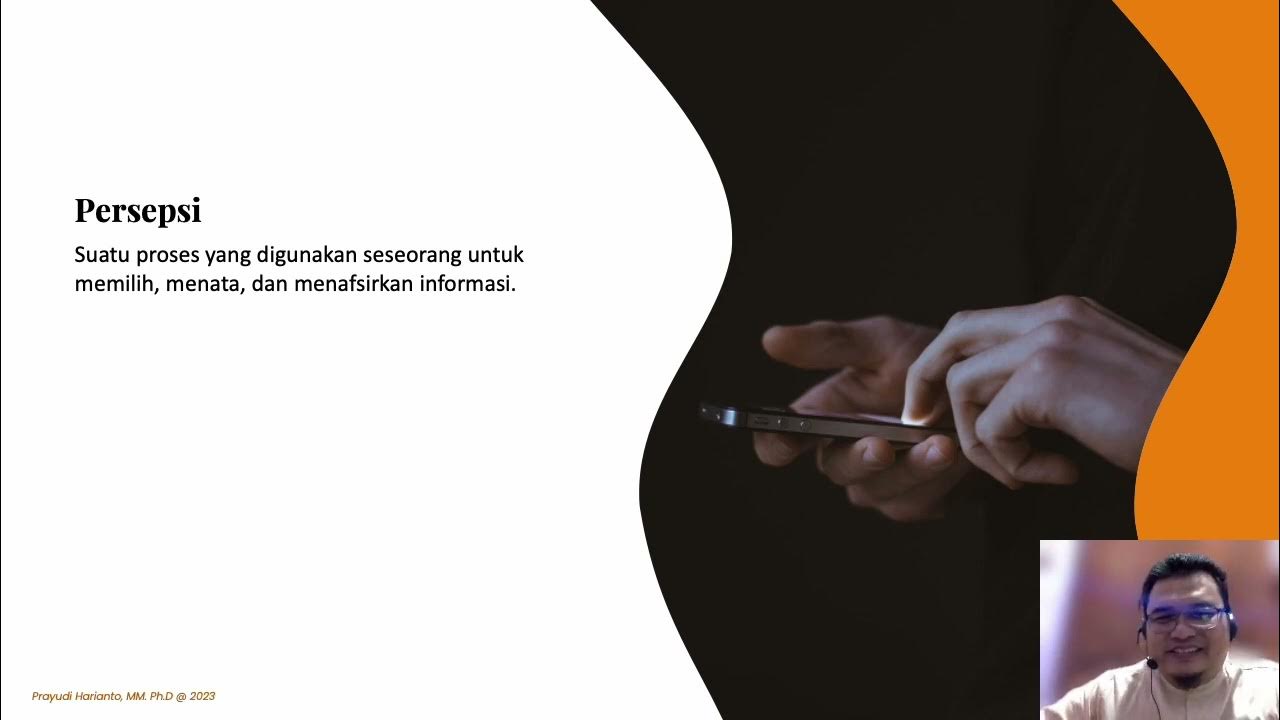Perception - Part 3
Summary
TLDRThis lecture explores perception in organizational behavior, emphasizing its significance for managerial decision-making. It dissects perception into sensory and social aspects, discussing how stimuli are selected and organized through Gestalt principles. The lecture delves into social perception, identity formation, and stereotyping. It introduces Kelley's attribution theory, explaining how we assign causes to behavior using consensus, consistency, and distinctiveness. The talk also covers perceptual biases like fundamental attribution error, halo effect, and self-fulfilling prophecies, highlighting their impact on workplace dynamics.
Takeaways
- 👀 Perception is a subjective process of giving meaning to sensory stimuli.
- 🧠 Perception involves both internal and external factors that influence how stimuli are selected.
- 🔍 Organizing selected stimuli is guided by principles from Gestalt theories, which apply to both sensory and social perception.
- 🌐 Social perception involves understanding others and ourselves within a social context.
- 🤔 Identity is formed by both personal and social identity, which can lead to stereotyping if based solely on social group characteristics.
- 🔑 Kelley's attribution theory uses consensus, consistency, and distinctiveness to determine if behavior is attributed to internal or external causes.
- 🚫 Negative impacts of social perception include perceptual biases such as fundamental attribution error and the Halo effect.
- 👥 Similar-to-me effect causes positive perceptions of those who are similar to us, potentially leading to in-group/out-group biases.
- 👁️ Selective perception can lead to overlooking important information that doesn't align with our preconceived notions.
- 🌟 First impressions can significantly influence our ongoing perceptions of others, exemplified by the Halo effect.
- 🔮 Perceptions can have a powerful impact, potentially leading to self-fulfilling prophecies like the Pygmalion and Golem effects.
Q & A
What is the definition of perception as discussed in the lecture?
-Perception is the process of giving meaning to sensory stimuli, and it is subjective in nature, meaning the same stimuli may be understood differently by different people.
Why is understanding perception important in an organizational context?
-Understanding perception helps managers make better decisions, as it allows them to recognize how different individuals interpret the same information differently and how this affects workplace behavior and interactions.
What are the two major sections of the chapter on perception?
-The chapter is divided into two major sections: the technicalities of sensory perception and the concept of social perception.
What are the internal and external factors in selecting a stimulus during perception?
-Internal factors are personal characteristics such as needs, experiences, and expectations, while external factors relate to the environment, such as the intensity, size, and contrast of the stimulus.
What is perceptual constancy, and how does it apply to social perception?
-Perceptual constancy is the tendency to perceive things as constant despite changes over time. In social perception, it means that people often overlook changes in others' behavior, assuming consistency.
What is stereotyping in social perception?
-Stereotyping is the process of categorizing people based on the social group they belong to, which can lead to biased and inaccurate perceptions.
What are the three criteria in Kelley’s attribution theory used to determine whether a behavior is attributed to internal or external causes?
-The three criteria are consensus (whether others behave similarly), consistency (whether the behavior occurs frequently), and distinctiveness (whether the behavior is unique to a particular situation).
What is the Halo effect in perception?
-The Halo effect is the tendency to generalize a person's overall impression based on a single trait, often overlooking negative traits due to a positive first impression or a specific quality.
What is the self-fulfilling prophecy, and how does it affect perception in the workplace?
-The self-fulfilling prophecy occurs when someone’s perception of others leads to behavior that causes those perceptions to become true. In the workplace, if a manager perceives employees as capable or incapable, their behavior towards those employees may reinforce those expectations.
What is the difference between the Pygmalion effect and the Golem effect?
-The Pygmalion effect refers to the phenomenon where high expectations lead to improved performance, while the Golem effect refers to the phenomenon where low expectations result in decreased performance.
Outlines

This section is available to paid users only. Please upgrade to access this part.
Upgrade NowMindmap

This section is available to paid users only. Please upgrade to access this part.
Upgrade NowKeywords

This section is available to paid users only. Please upgrade to access this part.
Upgrade NowHighlights

This section is available to paid users only. Please upgrade to access this part.
Upgrade NowTranscripts

This section is available to paid users only. Please upgrade to access this part.
Upgrade NowBrowse More Related Video
5.0 / 5 (0 votes)





